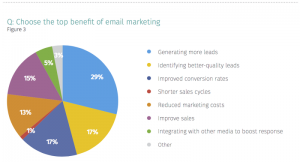— May 10, 2018
A recent article on Forbes.com revealed that B2B customers progress more than 70% of the way through the decision-making process before engaging a sales representative. For many organisations, this will have made for a frightening read. And the immediate, almost knee-jerk reaction, will have been to panic about how to ‘seal the deal’ in the final 30% of the time they’ll dedicate to their pre-purchase assessment.
But the trick here isn’t to rush into offering crazy discounts or deploying pushy sales tactics in an attempt to sway the investment choice. It’s actually not to focus too much on this latter 30% at all.
Because savvier digital marketers will look at this statistic with delight. They can use this 70% of time to their advantage. It is a ripe opportunity to take the prospective customer on a content-rich journey before they’ve even directly engaged with a brand. And all whilst the customer feels in a position of control, during their research.
As with any modern marketing strategy, the content should be relevant, timely and personalised – otherwise it will be nothing but a turn off. It should naturally fuel a gradual nurture process, where sales messages are built up slowly. The focus, certainly in the first 20% of the research phase, should be to deliver high-value, educational material, that will keep the recipient engaged.
It is tempting to believe that all content will be digested thoroughly, but of course this is not the case. Technology can therefore play a crucial role here, by automating journeys and triggering next-step communications based on the individual’s behaviour along the way.
This 70% of the process is also an opportunity to glean powerful insight so that, when the individual hopefully does engage with a sales representative, a more informed and contextual conversation will follow. And, because timing is everything in the world of B2B, the same insight can be used to identify and maximise opportune moments such as renewal periods. Again, the marketer doesn’t need to worry about remembering this, if tech can automate this process accordingly.
There is an argument that the marketer could attempt to exert an even greater influence in this scenario. Whilst a poorly-timed cold call will probably do little to build on the relationship, some individuals will undoubtedly be ready and willing to talk to a sales representative before they’ve reached their 70% decision-making milestone. This is why intelligent, effective lead scoring is so important. Even a simple scoring system – which attributes points to an individual based on the type of communication they’ve engaged with, the frequency of their visits to a website, the length of time they’ve spent on a web page and so on – can help to highlight when, in truth, they’re ready to talk. The B2B brands that have cleverly-integrated sales and marketing tech – and departments that work together closely – are certainly the ones who see greater success in this respect. Waiting for a customer to make the first move, could provide the perfect moment for a competitor to swoop.
All of this is assuming, of course, that the digital marketer has successfully engaged with the individual enough to be a contender for the final 30% of the decision-making process. If the brand doesn’t resonate or show up with the prospect when the research begins, there is work to be done before any of this advice can be actioned. Search engine rankings, profile building, PR and social media conversation are just some of the ways to get noticed when it really matters.
Overall, digital marketers accepted a long time ago that they have to work harder in the modern business environment. There is far less ‘low-hanging fruit’ and quick wins are unlikely. But it is possible to shape individuals’ decision making, if enough thought is put in to exactly what to say, to who, and when.
Digital & Social Articles on Business 2 Community
(18)
Report Post



